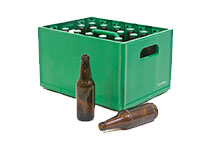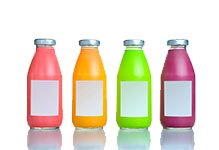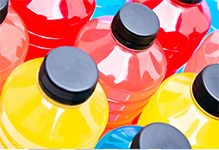Consumer Promotions
Integral to consumer promotions are Point-of-Purchase (POP) materials that attempt to build store traffic, exhibit and advertise the product, and promote impulse buying. As a support medium, POP It works best when used with other forms of advertising. POP materials may include window displays, counter displays, shelf talkers, floor and wall racks to hold the merchandise, streamers, and posters. Shipping cartons can often double as display units. Information centers may provide literature, samples, product photos, or an interactive computer kiosk. The emphasis on POP has led to new advertising approaches, including shopping cart ads, 'talking' products, beverage jingles activated when in-store refrigerator doors open, and interactive computers for selecting a variety of products. There are numerous types of POP materials. Coupons are certificates with a stated value presented to the retail store for a price reduction on a specified item. They reach consumers via newspapers or magazines, door-to-door, on product packages, in stores, by direct mail, or even online. Many coupons reach consumers through freestanding inserts (FSI's), colorful preprinted newspaper ads. While they can spur sales in the short term, they can also pose a problem. Manufacturers lose hundreds of millions of dollars annually on fraudulent coupon submissions by retailers. Combination Offers, or Combo's are two or more related products packaged together at a special price. Food and drug marketers sometimes use this method to introduce a new product by tying its purchase to an established product at a special price. Example: toothbrush packaged with a tube of toothpaste Electronic Coupons work like paper coupons in that they entitle the shopper to a discount. They are normally distributed by interactive touch-screen videos at the point of purchase that and generate instantly redeemable-print discounts, rebates, and offers incentives to try new brands. Given the interactive method of distribution, they give the retailer access to information about consumers that would normally not be available with paper coupons. Convenience Cards entitle the consumer to instant discounts at the checkout counter. They record the customers' purchases in a database allowing the retailer to understand their purchasing preferences. Multipoints is a European interactive system that lets customers collect points for visiting stores or watching commercials on TV. Participating stores act as redemption locations for prizes or discounts on various products. Cents-off promotions are short-term reductions in the price of a product in the form of cents-off packages, one-cent sales, free offers, and boxtop refunds. Refunds in the form of cash or coupons can apply toward future purchases of the product, by supplying the required proof of purchase. Rebates are larger cash refunds offered to a consumer for purchasing a product. The seller handles large rebates (like those given on cars). Redemption for small rebates (like those for household appliances) occurs when the customer sends in a certificate. Research indicates that many people purchase a product because of an advertised rebate but never collect the rebate because of inconvenience. Premiums are items offered for free or at a bargain price to encourage the consumer to buy an advertised product. They affect purchase behavior the same way as rebates, but can also be more effective at getting consumers to buy a product they did not intend to. They can improve the product's image, gain goodwill, broaden the consumer base, and produce quick sales. Premiums should have strong appeal and value and should be useful or unusual. Some of the various types of premiums include: In-Pack -- included inside the product's package On-Pack -- included on the product's package Self-liquidating -- consumer receives a gift with purchase. A price point is determined that still allows the retailer to break even. Continuity -- item given to customers who frequent store weekly with minimum dollar purchase. Usually, these items combine to form a set or collection (a set of dishes, for example). Sampling is one of the more costly of sales promotion since they involve labor costs, product costs and oftentimes a consideration for the retailer. However, they are quite effective for new products because it offers a free trial. Subsequent advertising or price promotions can encourage the consumer toward a repeat purchase, and ultimately establish brand loyalty. Sampling involves products that have a frequent purchase cycle and are available in small sizes. They may reach consumers by mail, door to door, via coupon advertising, or through an in-store promotion. A combination of related items can increase the value of a sample. In-store sampling programs can incorporate a coupon campaign. Sampling can employ either a ‘push or pull' strategy. Polybags deliver samples in plastic bags along with the daily newspaper or monthly magazine. It enables distribution to readers of the publication, thereby effectively targeting the proper demographics. Contests and Sweepstakes encourage consumption of the product by creating consumer involvement. Contests offer prizes based on entrants' skill. Sweepstakes offer prizes based on a chance drawing of entrants' names. Like sweepstakes, games have the element of chance, but these promotions have a longer timeline. The marketing advantage is that customers must make repeat visits to the retailer to continue playing. Contests and sweepstakes can be expensive incurring advertising and promotional expenses. They also require retailer support in order to be successful. Producers may offer prizes to retailer to enlist their support with promotions. It is important to note that companies cannot require a purchase as a condition for entry in to a contest or sweepstakes.
Beverages



